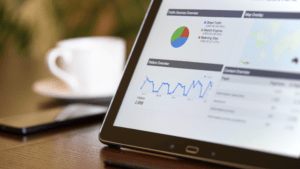It’s no great secret that blogging is big. Huge really. At present it’s estimated that there are some 150 million active blogs operating at any given time. And although that number includes a lot of fly-by-nights sites and those who don’t have staying power, blogging—especially via a WordPress site, an innovator and leader in the technology—is still a force to be reckoned with on the Internet.
Unfortunately there are lots of reasons that some blogs don’t make the grade and wither and die. And there are just as many reasons while other blogs thrive and grow, enjoying impressive readership bases and consistent click-throughs, repeat visits and the like.
So the beginning blogger may be asking themselves, how can I help ensure that my blog lasts? How can I garner attention amongst all the millions of other bloggers out there? Here are just a handful of tips, gathered from some of the best and brightest in the “blogosphere,” for getting your pages up and running and helping them go the distance in the constantly evolving and expanding virtual world.
- Be consistent and frequent with your posts. Experts recommend establishing a rhythm as soon as you can. This means setting a specific schedule for posting new content, whether it’s once a week, twice a week etc. And once your blog starts to get attention and repeat visits, don’t be afraid to increase the frequency of your posts. This will show readers you’re serious about your material and will encourage them to bookmark your site or sign up for a subscription.
- Plan ahead by building an editorial calendar. Again, experts recommend taking the time—perhaps at the beginning of every month—to lay out your posts for the immediate future and then stick to that schedule. This is more for the blogger than the reader: knowing what you’re going to write about ahead of time will save you a great deal of anxiety and stress and allow you to write more confidently, a fact that will eventually become evident to your readership.
- Be proactive in regards to the current topics people are searching. Do lots of keyword research and build a content strategy. Tools like Yoast Suggest and Google Trends can greatly aid you in determining what’s abuzz on the Internet and in popular culture, and it will look impressive to your visitors who’ll recognize that you’re on top of ongoing trends.
- Encourage readers to share your posts. Utilizing WordPress plugins and widgets, be sure to plant social share buttons on your pages. The Jetpack module is really helpful, as is the plugin MashShare. By giving visitors the opportunity to pass on your articles you will vastly increase your exposure to the larger blog-creating and blog-reading community, which will inevitably increase hits to your site.
- Keep your WordPress site simple to navigate and explore. Too often newbie site designers and owners will forget the old adage that “less is more,” especially when it comes to blog pages. So avoid having too many menus, submenus, links etc. An overly busy site leads to distraction among visitors, many of whom may become frustrated and seek their online reading elsewhere.
- Give readers a reason to visit again and again by crafting an e-newsletter that automatically alerts them when you have new content available or have made some sort of change to your site. Remember that the majority of people check their email religiously,so make sure they see a message pop up letting them know there’s something new on a site they’ve been visiting often. Hopefully, your loyal audience will begin looking forward to your missives and you’ll see your page hits rise exponentially.
- This can’t be stressed enough: make sure your blog site is built around the “mobile first” and “responsive design” concept and renders perfectly across all devices. Choose a design—theme, plugin etc.—that looks great when someone is viewing it on their smartphone or tablet. Remember this: the vast majority of people now go online via their mobile devices, not a desktop or laptop computer.
- Foster interaction between yourself and your readers. If someone comments on one of your posts, be sure to respond to them in a timely manner. Most people like to be “part of the conversation,” and establishing a back-and-forth dialogue with them builds loyalty and makes readers want to come check out your page again and again.
- Lastly, be sure you keep your WordPress blog backed up and secure. Nothing will be more frustrating then having your site crash or get hacked once you’ve built up a loyal following, as you may find yourself having to reengage them once you’re back up and running. So stay current with updates on your WordPress core program as well as themes, plugins etc. so if your site does go down, you’ll be able to restore it much quicker, and before your readership loses interest and goes elsewhere.


